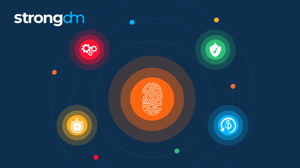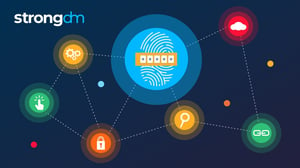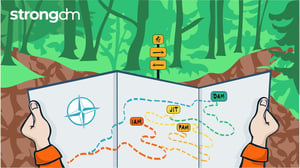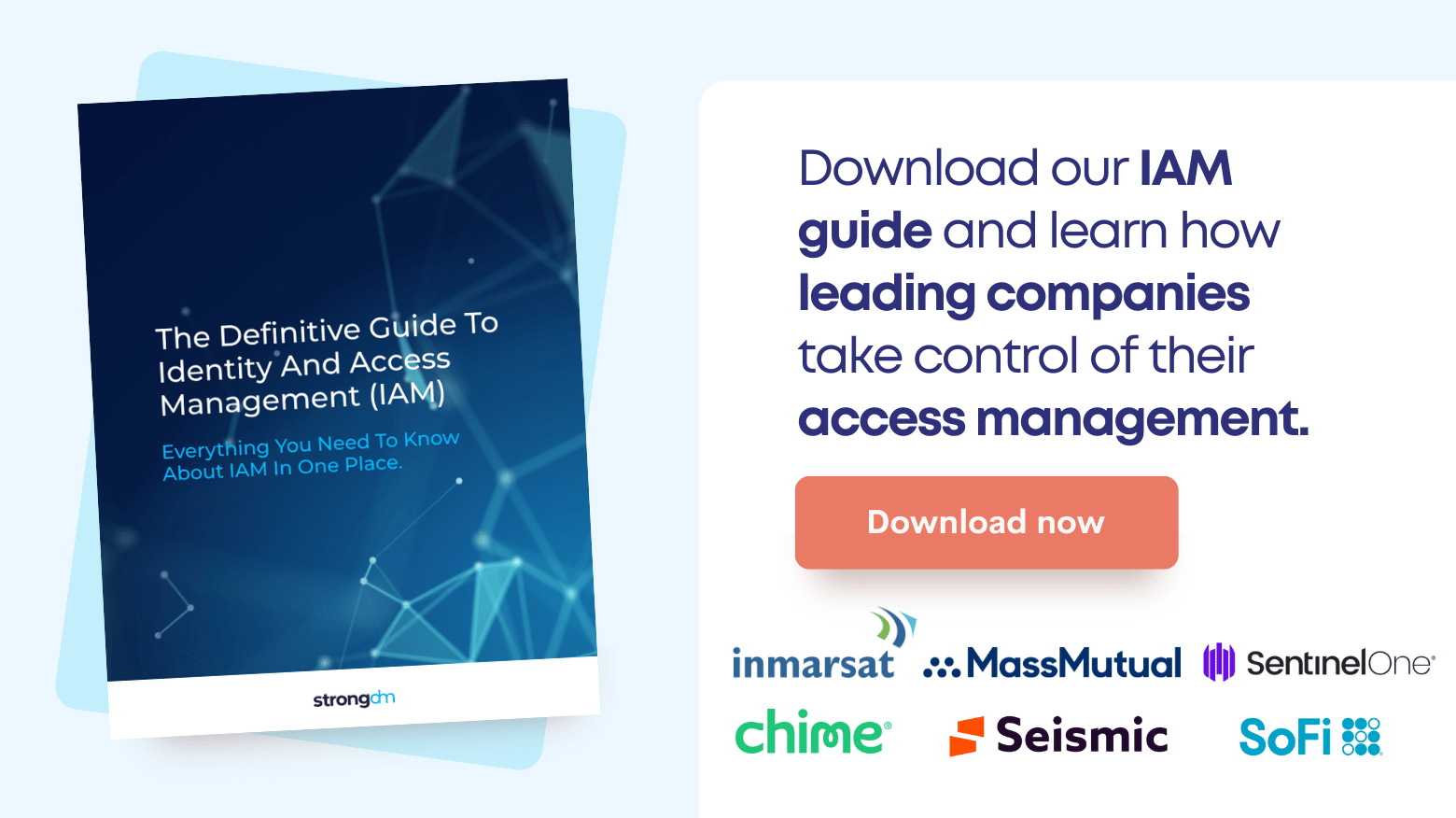Workforce Identity and Access Management (IAM) Explained
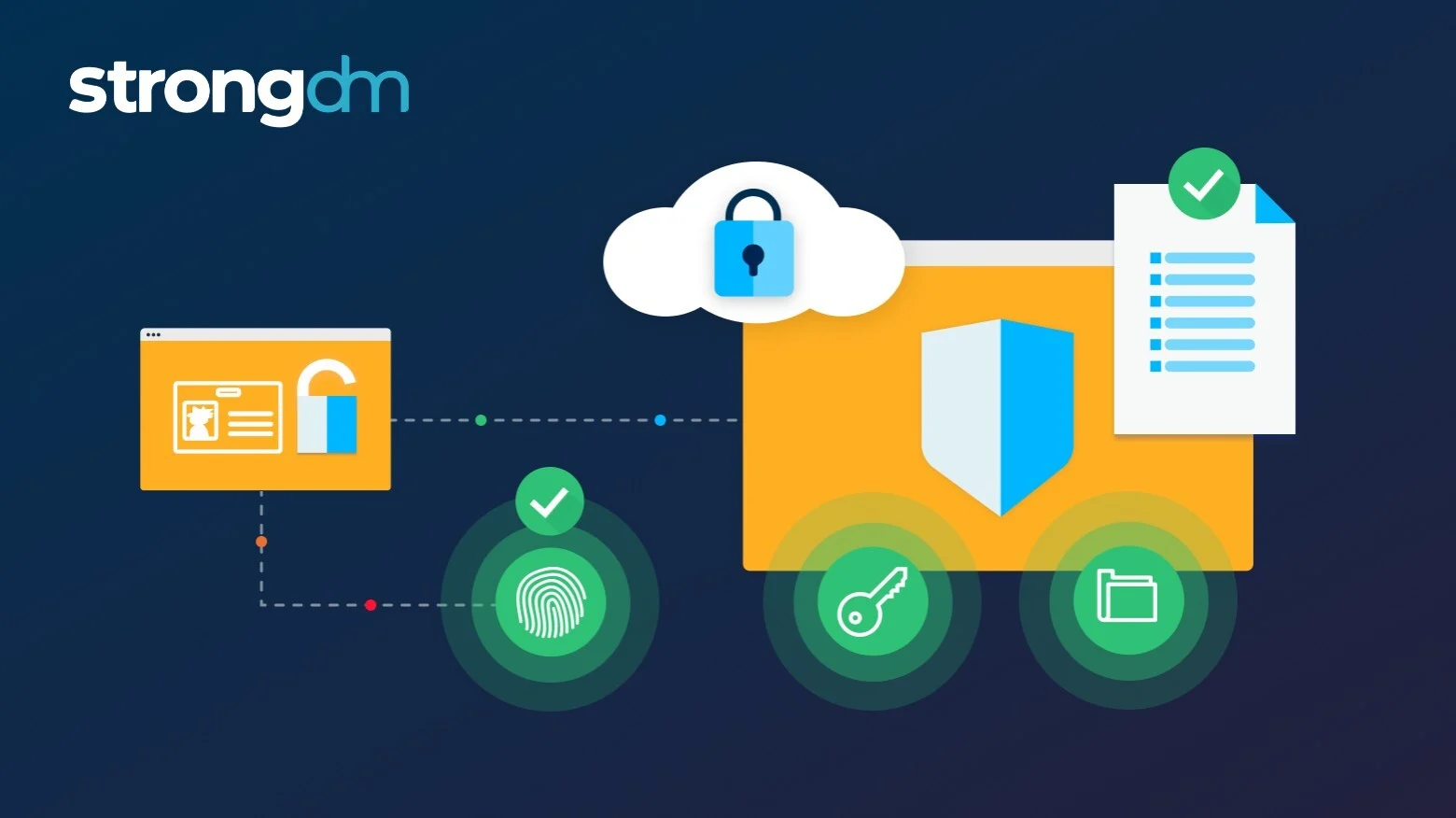

Written by
John MartinezLast updated on:
August 20, 2025Reading time:
Contents
Built for Security. Loved by Devs.
- Free Trial — No Credit Card Needed
- Full Access to All Features
- Trusted by the Fortune 100, early startups, and everyone in between
Your workforce is distributed. Your infrastructure is dynamic. And legacy IAM can’t keep up.
Workforce identity and access management (IAM) secures your internal users, employees, contractors, and engineers by verifying who they are, controlling what they can do, and monitoring how they interact with sensitive systems. It’s the foundation of Zero Trust in a cloud-first world.
This guide breaks down everything from SSO and MFA to RBAC, JIT access, and directory services, and how they all work together to keep your workforce productive and protected.
You will also learn how to control access to everything: databases, servers, Kubernetes, and more, with just one platform. Fine-grained permissions, real-time audit logs, and zero-trust enforcement, all without slowing anyone down.
What Is Workforce Identity and Access Management?Workforce identity and access management is a security approach that helps you verify employees’ identities before they use your systems, control what they can do once they are inside, and monitor their activities for anything unusual.
Workforce IAM is different from customer identity and access management (CIAM). It focuses on managing employees' access to resources and tools they use for work, such as logging into Salesforce, GitHub, and AWS. Meanwhile, CIAM manages customers’ access in your customer-facing applications.
Core Components of Workforce IAM
Key elements of effective workforce IAM include:
Authentication
When an employee wants to access your systems, they must prove their identity by providing credentials, such as passwords.
After an employee signs in using their login credentials, robust workforce IAM solutions like StrongDM request a second form of validation to confirm the user’s identity, a security strategy called multi-factor authentication (MFA).
Types of MFA include time-sensitive one-time passwords (OTPs) and biometrics, such as fingerprints.
Authorization
Once users are logged in, set permissions that determine what each of them can see or do. The goal is to give everyone just the right level of access they need to do their jobs.
Common ways of determining who should have access to which resources and why include:
- Role-based access control (RBAC) : Admins set up roles in the system and decide what each one can access. You then assign the roles to users based on their job, so everyone has the right permissions to do their work.
- Attribute-based access control (ABAC) : You use specific attributes to control access. This may include user characteristics (such as job titles and security clearance), resource properties (such as owner, creation date, or file type), and environmental specifics (such as time of day and location of access).
Provisioning and deprovisioning
With a reliable workforce IAM technology, allowing or limiting employee access based on employment status is easy and fast.
You can automate the process of granting system access to new employees, allowing them to get to work quickly. Similarly, you can automatically revoke access when offboarding former employees.
Directory services
A directory service stores details about users, devices, and resources in a system. This information, which may include usernames and passwords, allows you to control access to applications and resources.
To access and maintain data in a directory service, you use the lightweight directory access protocol (LDAP).
Microsoft Active Directory is the most popular directory service for enterprises. But since it’s suitable for on-premise IT environments, cloud-first businesses are shifting to cloud-based directory services.
Identity governance
Identity governance involves creating and managing user accounts in your system, as well as removing them when necessary. It also focuses on the process of requesting, assigning, approving, reviewing, and terminating access for user identities in your system.
Modern workforce AIM tools automate identity governance. They also create access logs for compliance audits.
Monitoring and logging
Advanced workforce IAM tools track how employees use your systems, enabling them to distinguish between normal user activities and unusual behaviors easily. This can help you identify and mitigate potential breaches as soon as they happen.
Why Workforce IAM Is Important
Workforce identity and access management benefits your company in many ways:
- Improves security: Around 80% of breaches in the U.S. start with unauthorized access. If you manage user identity and access effectively, only authorized workforce members see or use sensitive company resources. You grant access on a need-to-know basis, reducing the risk of insider threats.
- Promotes productivity: Workforce IAM gives employees quick, secure access to the tools and data they need for their job, without having to wait for time-consuming manual approvals.
- Enhances compliance: With a workforce IAM technology, you can show the steps you’ve taken to protect data from unauthorized access. As a result, it’s easy to prove compliance with cybersecurity regulations and standards, such as HIPAA, SOX, and NIST.
- Improves cost efficiency: When each employee only accesses what they need for their job, you avoid paying for extra software licenses. It also keeps your systems secure, lowering the chances of costly breaches.
Workforce IAM vs. Traditional IAM
With remote work and cloud technology increasingly popular, traditional IAM solutions aren’t cutting it anymore.
Modern workforce IAM tools are becoming companies' favorites because they are well-suited for today’s flexible, cloud-first work environment.
But what exactly sets them apart?
| Characteristic | Workforce IAM | Traditional IAM |
| Where it runs | Cloud | On-premise |
| Remote access | Yes | No |
| User focus | Built around employees’ roles, responsibilities, and work needs | Built for systems and older IT environments |
| Access control | Fine-grained access control (based on one or multiple factors) | Course-grained access control (based on just one factor) |
| Integration | Connects easily with SaaS tools and workflows modern businesses use | Doesn’t readily integrate with modern business tools and workflows |
| Automation | Advanced | Limited |
| When it’s suitable | Managing an in-office, remote, or hybrid workforce | Managing an in-office team only |
How Workforce IAM Fits into Zero Trust
Traditional IAM systems operate on the principle of implicit trust. If someone logs in with the correct credentials, the system assumes they are trustworthy, regardless of where they logged in from or the device they used. The systems also approve by default anything the user does with their account’s permissions.
This is risky.
The Zero Trust approach is more effective. It uses the principle of “never trust, always verify” and has three key pillars:
- Identity verification: You authenticate and authorize every user and their devices before granting any access. Besides the basic login password, users provide additional proof of their identity. This prevents unauthorized access.
- Least-privilege access: When a user is inside your system, they are granted only the minimum permissions they need to perform their work. This reduces the potential damage in the event of a breach.
- Continuous monitoring: The zero trust approach involves keeping tabs on user activity and patterns throughout sessions. If a user’s behavior is unusual (say, downloading large files when they usually don’t), your system sends an alert. In return, you identify and respond to suspicious activities quickly.
Workforce IAM makes Zero Trust possible. It provides you with the tools to verify identities, enforce least-privileged access, and track user activity all within one system.
Workforce IAM Challenges
Key problems businesses face when managing the identity of users and controlling their access include:
- Onboarding or offboarding at scale: As an organization grows, the number of employees and devices increases. This further complicates the process of granting or revoking access for multiple users at once.
- Managing access to ephemeral resources: These are temporary and usually require real-time access control. Not all workforce IAM solutions can handle dynamic access control.
- Shadow IT and decentralized access sprawl: When employees use unapproved apps or services without informing your IT team, you can’t see and manage all the tools they are using in one place. This makes it difficult to enforce consistent security policies and creates security gaps.
- Balancing security with employee experience: Workforce identity and access management beefs up cybersecurity. But lengthy verification and approval processes can delay access, which might frustrate users.
Best Practices for Implementing Workforce IAM
Want to make your workforce identity and access management effective? Here is what you can do:
Use single sign-on (SSO) and multifactor authentication
MFA adds an extra layer of security when verifying a user’s identity. SSO lets users sign in once and access everything they need to do their job.
Set just-in-time (JIT) access and least-privilege policies
The least privilege approach grants users the minimum access required to perform their tasks. Just-in-time (JIT) access makes sure they only get access when they need it.
Review access controls and certifications
Regular reviews of who has what access and whether they should help you spot outdated or unnecessary permissions.
Automate user lifecycle management
Automation simplifies the process of managing user access and permissions from the moment they join until they leave your company. Not doing it manually also saves time that IT teams can use in other critical operations.
Log and monitor access activities
Continuously recording and tracking access activities creates an audit trail that shows who accessed what and when. Spotting suspicious behaviors that may indicate a breach is also easy and quick.
Modern Workforce IAM, Made Simple with StrongDM
Traditional IAM can’t keep pace with today’s distributed workforce and dynamic infrastructure. StrongDM was built for the cloud-first era, making secure workforce access effortless:
- Unify Access Across Everything: Databases, servers, Kubernetes, cloud, and SaaS—all controlled in one place. No more fragmented tools or blind spots.
- Fine-Grained, Zero Trust Enforcement: Enforce least-privilege and just-in-time access with precision, so employees, contractors, and vendors only get the access they need—when they need it.
- Seamless Onboarding & Offboarding: Automate provisioning and deprovisioning across your entire stack to reduce risk and speed up employee productivity.
- Continuous Monitoring & Audit Trails: Every session, query, and permission change is logged in real time, giving you full visibility and simplifying compliance.
- Employee Experience Without Compromise: StrongDM eliminates friction with SSO, adaptive MFA, and instant access workflows that keep productivity high while security stays tight.
Workforce IAM is the foundation of Zero Trust. StrongDM makes it practical, powerful, and painless.
Book a demo today to see how StrongDM secures your workforce without slowing it down.
Next Steps
StrongDM unifies access management across databases, servers, clusters, and more—for IT, security, and DevOps teams.
- Learn how StrongDM works
- Book a personalized demo
- Start your free StrongDM trial
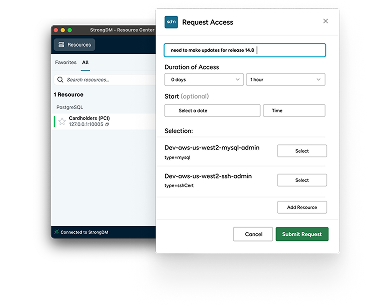
Categories:

About the Author
John Martinez, Technical Evangelist, has had a long 30+ year career in systems engineering and architecture, but has spent the last 13+ years working on the Cloud, and specifically, Cloud Security. He's currently the Technical Evangelist at StrongDM, taking the message of Zero Trust Privileged Access Management (PAM) to the world. As a practitioner, he architected and created cloud automation, DevOps, and security and compliance solutions at Netflix and Adobe. He worked closely with customers at Evident.io, where he was telling the world about how cloud security should be done at conferences, meetups and customer sessions. Before coming to StrongDM, he lead an innovations and solutions team at Palo Alto Networks, working across many of the company's security products.
You May Also Like

